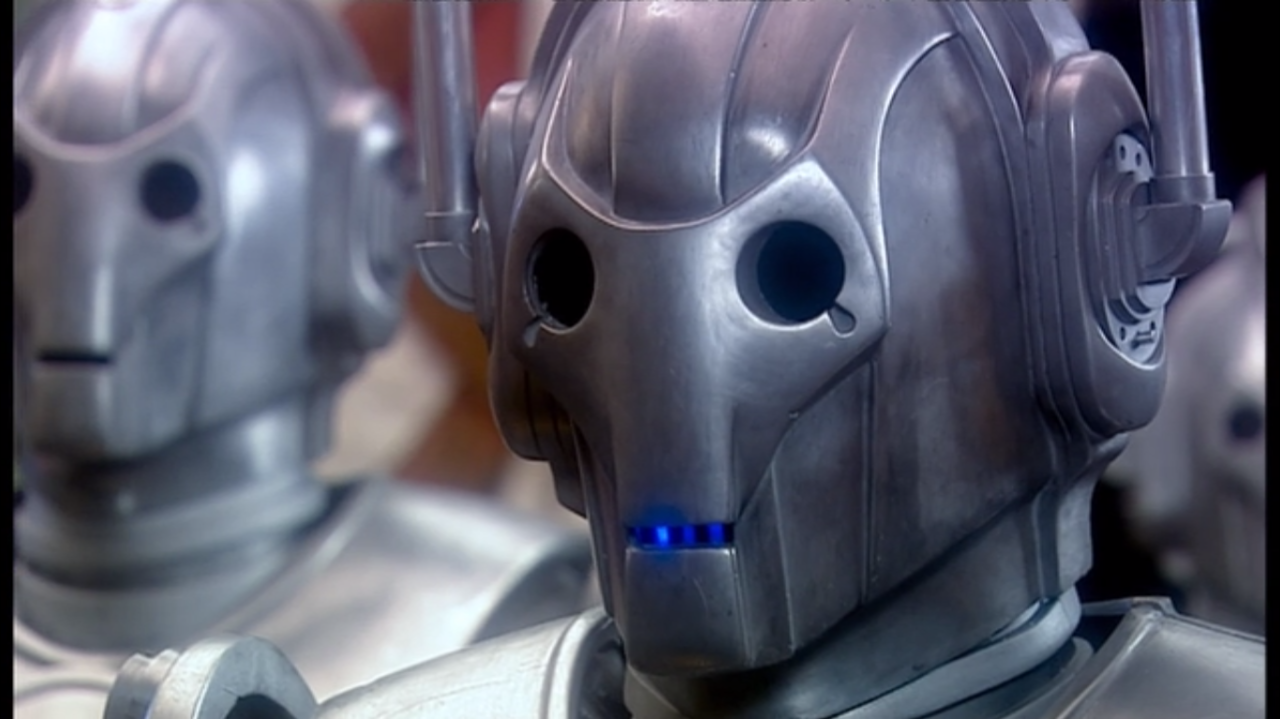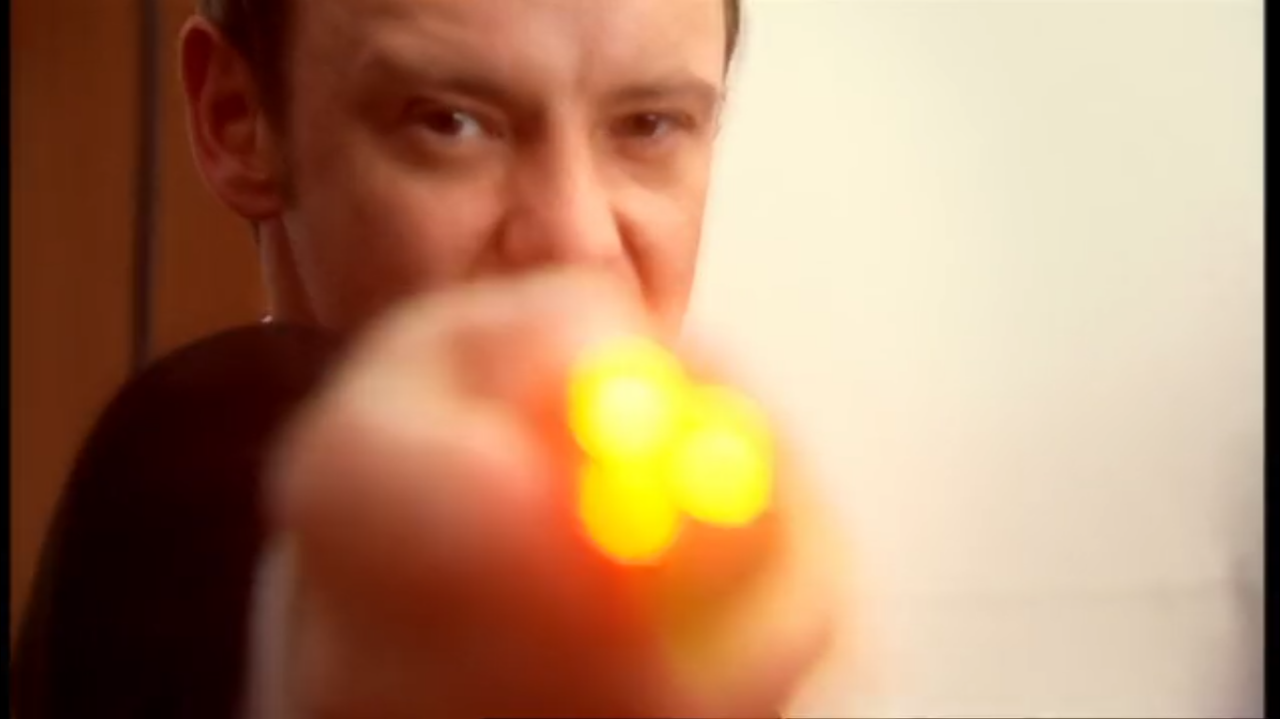Five Times Doctor Who Actually Got Their Science Right
Fantastic!

 When a show explains away the many paradoxes created by its time traveling hero with the phrase “timey-wimey, wibbly-wobbly,” that’s a pretty good sign that this isn’t the place to go for exacting scientific accuracy. The pre-historic civilization of lizard people, sentient plastic mannequins, and space whales that carry entire countries on their backs – not to mention the police telephone box that’s bigger on the inside than the outside – don’t exactly leave you with the feeling that the show creators cared too much about the science when they wrote their science fiction.
When a show explains away the many paradoxes created by its time traveling hero with the phrase “timey-wimey, wibbly-wobbly,” that’s a pretty good sign that this isn’t the place to go for exacting scientific accuracy. The pre-historic civilization of lizard people, sentient plastic mannequins, and space whales that carry entire countries on their backs – not to mention the police telephone box that’s bigger on the inside than the outside – don’t exactly leave you with the feeling that the show creators cared too much about the science when they wrote their science fiction.
But Doctor Who is a show that loves to surprise, and I’m absolutely certain that in among the Daleks and Time Lords, you can find at least five examples of solid science. So, I’ve set myself a challenge. I’m going to find those five good examples and bring them to you. And, to keep things interesting, instead of giving myself the full 34 seasons plus specials and one made-for-TV movie, I’m only looking at the eight seasons of the new Doctor Who.
1. The End of the World

In the second episode of new Doctor Who, “The End of the World,” the Ninth Doctor takes his new companion, Rose Tyler, on her first voyage into the future. Naturally, he picks the day five billion years in Rose’s future when the Earth is destroyed for their first outing. However, unlike many Doctor Who episodes, rather than trying to save the Earth from an alien attack, the end of the Earth is a natural event caused by the expansion of the sun as it becomes a red giant.
One of the most likely scenarios for the end of the Earth is exactly that. In approximately 1.2 billion years, the hydrogen at the core of the sun will start being used up and the burning will spread from the core to the surface of the sun, devastating planet Earth with intense radiation. Somewhere between five billion years from now – the setting of “The End of the World” – and eight billion years, the sun will run out of hydrogen completely, collapse under its own weight and begin expanding. Eventually, it will become a red giant and engulf the Earth, much like Rose saw in “The End of the World.”
2. World War Three
 In “World War Three,” the Tenth Doctor, still with companion Rose, plans to stop the takeover of planet Earth by a family of aliens known as the Slitheen. There are a lot of scientific inaccuracies about the Slitheen, the most obvious being the gas-exchange technology that allows them to fit their giant bodies into the skins of freshly killed humans. At first, I didn’t think I’d find anything here, but then I remembered Rose’s mother throwing pickled onions and eggs on one of the Slitheen to defeat it.
In “World War Three,” the Tenth Doctor, still with companion Rose, plans to stop the takeover of planet Earth by a family of aliens known as the Slitheen. There are a lot of scientific inaccuracies about the Slitheen, the most obvious being the gas-exchange technology that allows them to fit their giant bodies into the skins of freshly killed humans. At first, I didn’t think I’d find anything here, but then I remembered Rose’s mother throwing pickled onions and eggs on one of the Slitheen to defeat it.
That sounds even more ridiculous than a gas-exchange-based shrinking technology, until you take into account an off-hand comment of the Doctor’s. The Slitheen are a calcium-based life form. Pickling is done with vinegar and when you mix calcium and vinegar, you get a reaction. The acetic acid in vinegar makes calcium water soluble. If you remember what happens right after Mickey hits the Slitheen with the salad dressing, it doesn’t explode, it turns into a liquid. The calcium in the Slitheen’s body, affected by the acetic acid, would have become water soluble. Given enough water – possibly provided by that gas-exchange – the calcium would dissolve and no more Slitheen.
3. Rise of the Cybermen
 Since “Rise of the Cybermen,” an episode with the Tenth Doctor and companion Rose, takes place in another dimension and involves headphones that double as mind control devices, it’s another episode that doesn’t immediately seem to lend itself to scientific accuracy. However, “Rise of the Cybermen” is also a reboot of an enemy of the Doctor that goes back all the way to 1966 and the Second Doctor. One of the most important things about the Cybermen – besides being human brains in metal bodies – is that they have no emotion. In “Rise of the Cybermen,” we get our first look at how Cybermen are made. Hint: it involves a lot of circular saws and blades on mechanical arms and screaming. Damage to the brain in that process could create significant behavior changes or even a loss of emotion.
Since “Rise of the Cybermen,” an episode with the Tenth Doctor and companion Rose, takes place in another dimension and involves headphones that double as mind control devices, it’s another episode that doesn’t immediately seem to lend itself to scientific accuracy. However, “Rise of the Cybermen” is also a reboot of an enemy of the Doctor that goes back all the way to 1966 and the Second Doctor. One of the most important things about the Cybermen – besides being human brains in metal bodies – is that they have no emotion. In “Rise of the Cybermen,” we get our first look at how Cybermen are made. Hint: it involves a lot of circular saws and blades on mechanical arms and screaming. Damage to the brain in that process could create significant behavior changes or even a loss of emotion.
Scientists count insensitivity and loss empathy as one of the many problems that can arise from severe traumatic brain injury. In fact, researchers looked at the unconscious physical responses to emotional displays and saw that people with traumatic brain damage reacted much less to emotional stimuli than people without brain injuries. They also scored lower on emotional empathy tests. So, it wouldn’t be surprising for a traumatic brain injury caused by one of those whirling blades as it turns human into Cyberman to also lower emotional responsivity.
4. The Sound of Drums
 “The Sound of Drums” features the Tenth Doctor and companion Martha Jones fighting against The Master, an enemy first faced by the Third Doctor. Even better, we finally get to learn the reason behind the Master’s increasingly mad schemes. The Master is a Time Lord, like the Doctor, and the two were even childhood friends, but when both the Master and the Doctor left Gallifrey, the Doctor wanted to see the world and the Master wanted to rule it. In “The Sound of Drums,” it’s revealed that the Master’s insanity stems from a drumming sound he has been hearing constantly since childhood. Originally, I took this as artistic license. I have tinnitus, which essentially means that the annoying ringing sound you hear after going to a concert is always on for me and I’m pretty sure that has nothing to do with my dreams of universal conquest. However, certain low frequency sounds have been known to have negative effects on mental health.
“The Sound of Drums” features the Tenth Doctor and companion Martha Jones fighting against The Master, an enemy first faced by the Third Doctor. Even better, we finally get to learn the reason behind the Master’s increasingly mad schemes. The Master is a Time Lord, like the Doctor, and the two were even childhood friends, but when both the Master and the Doctor left Gallifrey, the Doctor wanted to see the world and the Master wanted to rule it. In “The Sound of Drums,” it’s revealed that the Master’s insanity stems from a drumming sound he has been hearing constantly since childhood. Originally, I took this as artistic license. I have tinnitus, which essentially means that the annoying ringing sound you hear after going to a concert is always on for me and I’m pretty sure that has nothing to do with my dreams of universal conquest. However, certain low frequency sounds have been known to have negative effects on mental health.
In Taos, New Mexico; Bristol, England; Largs, Scotland and other spots around the world, a small percentage of the inhabitants can hear a mysterious noise, called the Hum. The Hum is a very low frequency droning or rumbling sound, possibly 50 or 56 Hertz. Because low wavelength sound have wavelengths up to ten meters, it’s very difficult to block the noise or even tell what direction it’s coming from. It’s estimated that about two percent of people could hear the Hum if exposed to it. Most researchers have concluded that the Hum is real, though theories differ on what causes it. The common symptoms of those who can hear the Hum are depression, anxiety, mood swings, and insomnia. While those things don’t add up to the full-blown madness of the Master, they do add up to a clear picture of how sound can cause mental health issues. And The Master is, of course, listening to a different sound than the people of Taos.
5. Vincent and the Doctor
 In “Vincent and the Doctor,” the Eleventh Doctor and his companion Amy Pond travel back in time to meet Vincent Van Gogh after seeing a mysterious monster hidden in Van Gogh’s painting The Church at Auvers. The monster is the Krafayis, an invisible predator stalking the French town of Arles in 1850, and Van Gogh the Doctor and Amy are the only ones who can defeat it. The Krafayis is blind. Whether or not invisibility is possible – and some research points to yes – in order to be truly invisible, the Krafayis would have to be blind.
In “Vincent and the Doctor,” the Eleventh Doctor and his companion Amy Pond travel back in time to meet Vincent Van Gogh after seeing a mysterious monster hidden in Van Gogh’s painting The Church at Auvers. The monster is the Krafayis, an invisible predator stalking the French town of Arles in 1850, and Van Gogh the Doctor and Amy are the only ones who can defeat it. The Krafayis is blind. Whether or not invisibility is possible – and some research points to yes – in order to be truly invisible, the Krafayis would have to be blind.
In order to see, you need photons to reflect off an object and enter your eye through the cornea, which refracts the light rays into the pupil. The light rays then pass through the lens, which changes shape to focus the light onto the retina at the back of the eye. The rods and cones in the retina detect the light and pass the information to the brain through the optic nerve. An invisible creature, like the Krafayis, would also have invisible corneas, lenses, and retinas. An invisible cornea can’t refract light. An invisible lens can’t focus light. And an invisible retina won’t register light. Why? Since what we see is light lays bouncing off of objects, to be invisible to a human, the Krafayis would have to deflect the light rays away from itself. But, those same light rays that let us see a creature coming at us are also needed by that creature to see.
Doctor Who is my absolute favorite TV show and, as much of a fan of scientific accuracy in television as I am, I’m not going to try to tell you that these episodes prove that Doctor Who is a show about accurate science. Doctor Who is a show about the wonder of discovery that is at the heart of scientific inquiry and, every once in a while, it also gets the science right.
Now, I’m going to go watch a T-Rex the size of a three story building go crashing through the Thames in Victorian era London.
Jessica Sirkin is a speculative fiction writer and technology journalist living in Boston with her pet rabbit, Lenore. Her short story, “The House in Winter” was a runner-up for the “Apex Magazine Best Story of the Year 2014” and was made into a podcast. She spends of her time sitting in front of a computer and should probably get out more. Follow her on twitter @jessicasirkin or find her on LinkedIn.
—Please make note of The Mary Sue’s general comment policy.—
Do you follow The Mary Sue on Twitter, Facebook, Tumblr, Pinterest, & Google +?
Have a tip we should know? [email protected]